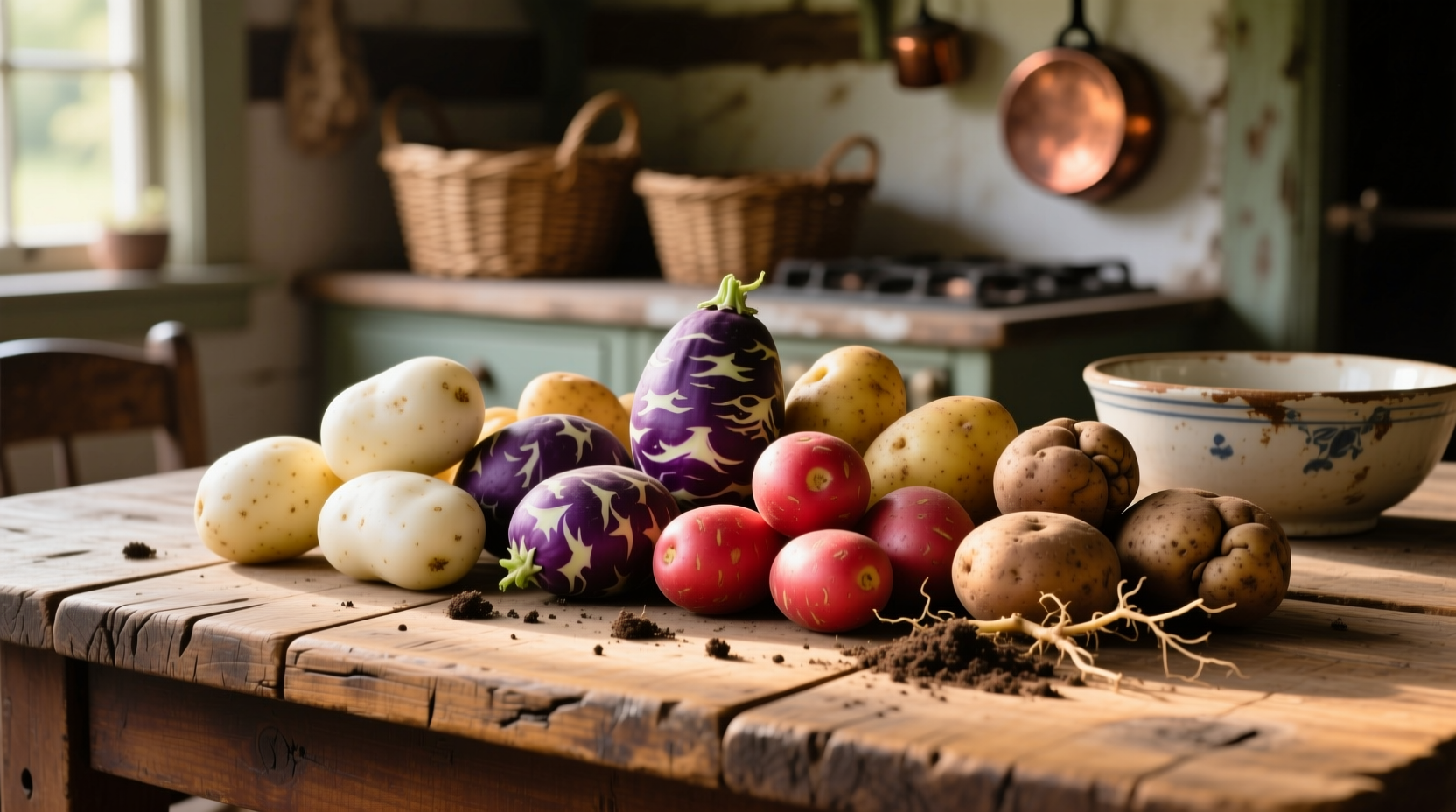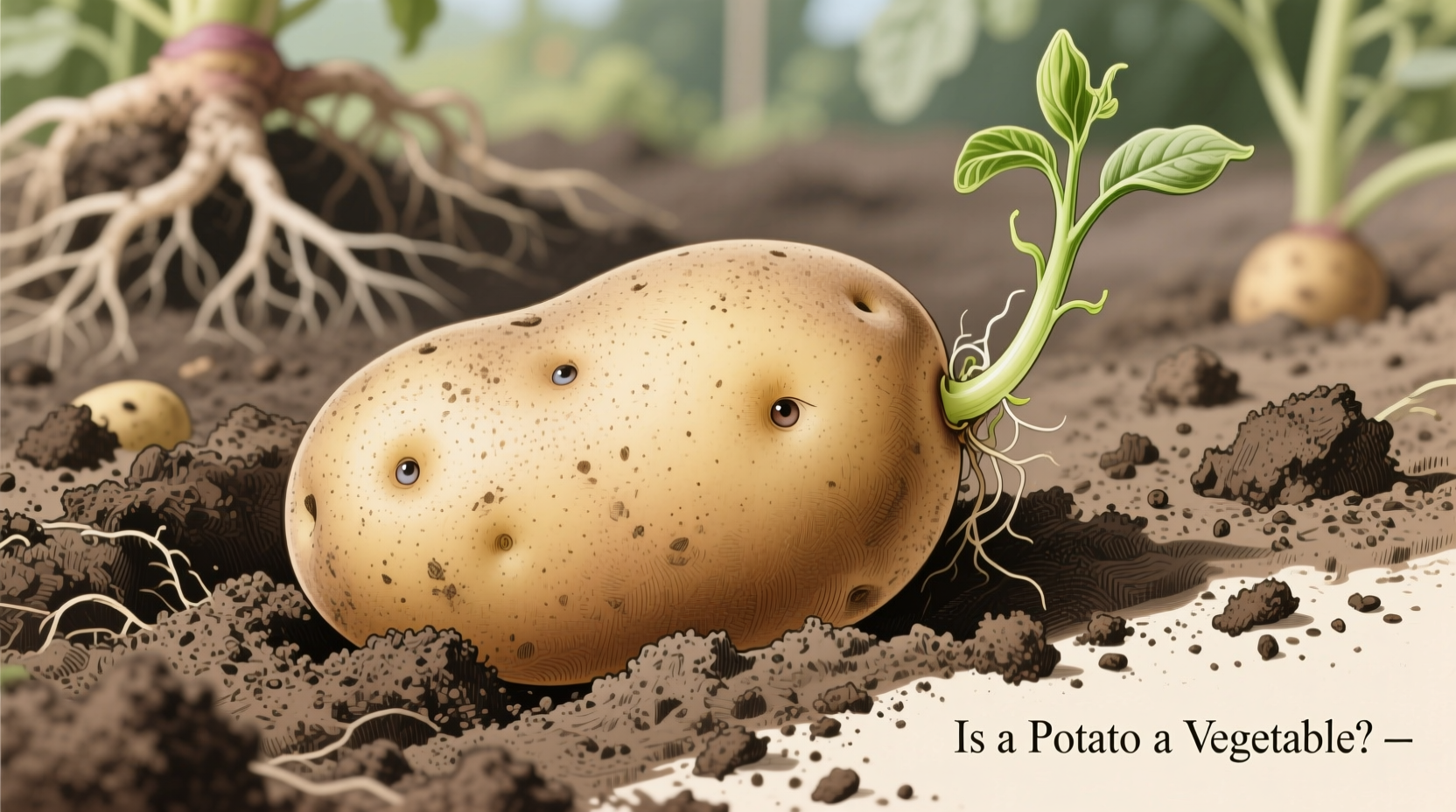Ever wondered why your nutrition app counts potatoes as vegetables while your biology teacher called them tubers? You're not alone. This common confusion stems from two different classification systems that serve distinct purposes. Let's clarify this culinary conundrum once and for all.
The Botanical Reality: Potatoes Are Technically Not Vegetables
From a strict botanical perspective, potatoes (Solanum tuberosum) are modified underground stems called tubers, not vegetables. Vegetables typically refer to edible plant parts like leaves (spinach), roots (carrots), or flowers (broccoli). Potatoes belong to the nightshade family (Solanaceae), which also includes tomatoes and eggplants.
| Classification System | Category | Reasoning |
|---|---|---|
| Botanical | Tuber (modified stem) | Storage organ for nutrients, contains "eyes" that can sprout |
| Nutritional | Starchy Vegetable | Grouped with vegetables due to culinary use and nutrient profile |
| Culinary | Vegetable | Used like vegetables in cooking and meal planning |
Nutritional Guidelines: Why Potatoes Count as Vegetables
The USDA's Dietary Guidelines for Americans categorizes potatoes as starchy vegetables alongside corn and peas. This classification serves practical dietary planning purposes:
- They provide essential vitamins (particularly vitamin C and B6) and minerals (potassium)
- They're consumed as side dishes or components of main courses like other vegetables
- They fit within the vegetable group in MyPlate recommendations
According to the USDA FoodData Central, a medium potato with skin contains approximately 160 calories, 37 grams of carbohydrates, 4.3 grams of fiber, and significant amounts of potassium and vitamin C. This nutritional profile aligns more closely with other vegetables than with grains or proteins.

Historical Context: How Potatoes Became Vegetable Stand-Ins
Understanding the historical journey of potato classification reveals why confusion persists. When potatoes were introduced to Europe from South America in the 16th century, they were initially met with suspicion. Over centuries, they evolved from famine food to dietary staple:
- 1530s: Spanish conquistadors bring potatoes from Andes to Europe
- 1700s: French scientist Antoine Parmentier champions potatoes as famine prevention
- 1840s: Irish Potato Famine demonstrates potatoes' critical role in food security
- 1940s: USDA begins including potatoes in vegetable group for rationing purposes
- 2020s: Modern nutrition guidelines maintain potatoes as starchy vegetables
Practical Implications for Your Plate
Whether you're meal planning, following dietary guidelines, or just curious about food science, understanding this dual classification matters:
For balanced nutrition: While potatoes count toward your daily vegetable intake, they shouldn't replace non-starchy vegetables like broccoli or spinach. The American Heart Association recommends filling half your plate with vegetables, emphasizing variety with both starchy and non-starchy options.
For cooking applications: Potatoes function differently than most vegetables due to their starch content. This explains why they're ideal for mashing, frying, and thickening dishes—properties not shared by leafy greens or cruciferous vegetables.
For dietary restrictions: People managing blood sugar levels should treat potatoes more like grains than non-starchy vegetables due to their higher carbohydrate content. The glycemic index of boiled potatoes (78) is closer to white bread (75) than to carrots (39).
When Classification Matters Most
The potato classification question becomes particularly relevant in specific contexts:
- School lunch programs: USDA regulations require potatoes to be served no more than twice weekly to ensure vegetable variety
- Dietary guidelines: MyPlate recommends making half your grains whole while emphasizing variety among vegetable subgroups
- Medical nutrition therapy: Dietitians working with diabetic patients often categorize potatoes with carbohydrate sources rather than non-starchy vegetables
- Gardening practices: Botanical classification affects crop rotation strategies as potatoes share disease vulnerabilities with tomatoes and peppers
Understanding these context boundaries helps explain why the "is a potato a vegetable" question doesn't have a single yes-or-no answer—it depends entirely on whether you're approaching the question from a botanical, nutritional, or culinary perspective.











 浙公网安备
33010002000092号
浙公网安备
33010002000092号 浙B2-20120091-4
浙B2-20120091-4